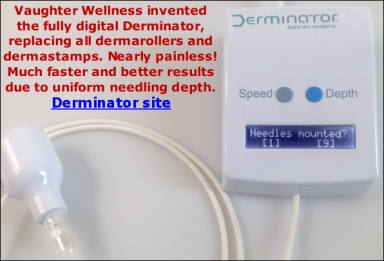You should only use the suction pump if it is likely that your scars are tethered – it means if you have the rolling type of acne scars.
Are you going to have Restylan injected into your indented scars as temporary filler or are you having just the "cheek bones enhancement"?
To be honest, I do not know whether the suction pump could theoretically slightly move the filler. Suctioning is a new method and I am not able to give you a definite answer.
If they are going to inject it into your scars, it would be wiser to avoid suctioning. You can continue with microneedling.
If they are going to inject it just to your cheek bones area, you can suction the rest of the cheeks.
For acne scars, adding a 1.5 mm dermastamp with 35 needles to your dermarolling sessions (first stamp the scars then roll it) would be beneficial, especially if your scars are rather deep.
Here is a study on whether laser therapy, radiofrequency or IPL negatively affect dermal fillers and the result is that it does not:
Randomized Trial to Determine the Influence of Laser Therapy, Monopolar Radiofrequency Treatment, and Intense Pulsed Light Therapy Administered Immediately after Hyaluronic Acid Gel Implantation
BACKGROUND Hyaluronic acid-based dermal fillers, such as hyaluronic acid gel (Restylane, Q-Medical AB, Uppsala, Sweden), are widely used for tissue augmentation of the nasolabial folds. Additional dermatologic treatments using infrared light, radiofrequency (RF), and intense pulsed light (IPL) are also important tools for facial rejuvenation. This study was designed to evaluate whether these therapies could be safely administered immediately after hyaluronic acid gel treatment without compromising the effect of the dermal filler.
OBJECTIVE The objective of this study was to confirm or refute any possible subtractive effects of augmentation of the nasolabial folds when followed by 1,320-nm Nd:YAG laser, 1,450-nm diode laser, monopolar RF, and/or IPL treatments.
METHODS Thirty-six patients with prominent nasolabial folds were treated with hyaluronic acid gel implantation on one side of the face and hyaluronic acid gel followed by one of the nonablative laser/RF/IPL therapies on the contralateral side of the face.
RESULTS There were no statistically significant differences between wrinkle severity or global aesthetic scores for hyaluronic acid gel implantation alone and hyaluronic acid gel with laser/RF/IPL treatment at any time point. In a small sample, histologic changes were not apparent after laser/RF/IPL treatment.
CONCLUSIONS Based on this small pilot study, laser, RF, and IPL treatments can safely be administered immediately after hyaluronic acid gel implantation without reduction in overall clinical effect.





